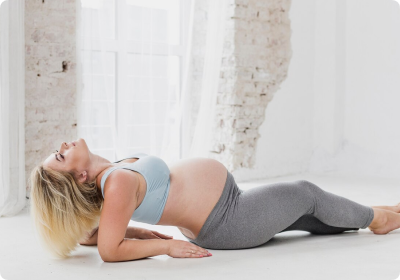Common Pregnancy Pains and How a Pelvic Floor Physical Therapist Can Help

Pregnancy is a beautiful, life-changing experience, but it often comes with a variety of aches and pains. Whether it’s your first pregnancy or your fourth,

Pregnancy is a beautiful, life-changing experience, but it often comes with a variety of aches and pains. Whether it’s your first pregnancy or your fourth,

Prolapse is when your rectum, uterus, or bladder bulge into your vaginal wall due to weakened
pelvic floor muscles. This can happen when the muscles and connective tissues supporting
these organs become inadequate. You might feel or even see this bulge, and it can lead to a
range of symptoms.

Pelvic health isn’t just about doing kegels and focusing on your breathing. It’s a holistic journey where everything you do plays a role. Often, when there’s an issue with your pelvic floor, it’s not the root cause but a symptom of a larger problem. That’s why addressing various aspects of your lifestyle is crucial.

Have you ever been told, “After you have kids, a little leaking is normal”? Let’s set the record straight: while common, leaking urine after childbirth is not something you have to accept as normal. It’s a sign of pelvic floor muscle dysfunction that deserves attention.

Are you constantly sprinting to the bathroom the moment you step through your front door? Or dealing with those embarrassing leaks when your bladder demands immediate attention? You might be dealing with something known as “urinary urgency.” But don’t worry, there’s hope! Buckle up as we unveil simple yet effective strategies to combat urge incontinence and say farewell to those urgent restroom runs.

Do you find yourself wondering about the best pelvic floor exercise? Kegels, squats, deep belly breathing—there are many options out there, but the truth might just surprise you.
Believe it or not, the best pelvic floor exercise isn’t just one exercise. Like any other muscle in your body, your pelvic floor craves a variety of movements to thrive. You need strength, mobility, the ability to absorb force, and impeccable control and coordination.
But here’s the catch: what works for one person may not work for another. That’s why a personalized approach is key.

Diastasis recti, commonly referred to as “separated abs,” is a condition that often occurs postpartum. While many women may associate it solely with aesthetic concerns, it is essential to understand that diastasis recti is more than just a cosmetic issue. In this article, we will delve into what diastasis recti is, what it is not, and its potential impact on daily life. Moreover, we will explore effective strategies for managing and improving this condition, moving beyond the myths of quick-fix exercises.

Bringing new life into the world through a cesarean section is a profound journey, marked not only by the joy of childbirth but also by the physical recovery that follows. Among the lasting reminders of this experience is the c-section scar, which, while beautiful in its symbolism, requires careful attention for optimal healing and long-term well-being. Unfortunately, many women find themselves lacking guidance on how to properly care for this crucial aspect of postpartum recovery.

If you’ve ever heard of the “deep core” on social media or attempted some “deep core” workouts, you may wonder what all the buzz is about. Understanding the significance of your deep core muscles and how to activate them can transform your workouts and improve your overall health. In this article, we’ll explore what the deep core is, why it’s crucial, and how to effectively engage it for various benefits, from alleviating low back pain to enhancing functional tasks.

Stress Urinary Incontinence (SUI) is a prevalent medical condition that affects millions of people worldwide. Despite its prevalence, it remains an often unspoken topic due to embarrassment and stigma. However, it is crucial to shed light on SUI, as understanding the symptoms and available treatments can significantly improve the quality of life for those affected. In this post, we will delve into the symptoms of SUI, how to identify if you have it, and explore various treatment tips to help you regain control and confidence.

Picture this: You’ve been having some pelvic health issues and when you talk to someone about it, you’re told to “do kegels.” But you’ve been doing kegels since you learned about them in high school, and you’re STILL having issues. Frustrating, right? It’s a common story among women. But here’s the truth: relying solely on kegels won’t solve all your pelvic health issues. Let’s dive deeper into this and uncover the real solutions.

The pelvic floor is a group of muscles, nerves, ligaments, and blood supply that support the diaphragm and pelvic organs, including the bladder, uterus, and rectum. They play a crucial role in maintaining healthy bladder and bowel habits, sexual function, and overall stability of the pelvis. However, when the pelvic floor muscles don’t work properly, they can lead to a range of issues, such as urinary or fecal incontinence, painful sex, and pelvic organ prolapse. In this post, we’ll explore the functions of the pelvic floor muscles and what you can do to keep them healthy.